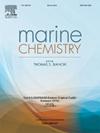极地海水中主要营养物质保存方法的比较评价
IF 2.5
3区 地球科学
Q2 CHEMISTRY, MULTIDISCIPLINARY
引用次数: 0
摘要
主要营养物质——硝酸盐、磷酸盐和硅酸盐——是海洋生物量的基本组成部分。为了了解生态系统中物质和能量的流动,准确量化营养物质的浓度是至关重要的。当无法在船上进行分析时,必须在不改变其内容的情况下保存海水样品。在这项研究中,我们研究了一系列常用的保存方法,包括过滤、用HgCl2化学中毒、在- 20°C或- 80°C冷冻而不进行预处理,所有这些方法都旨在最大限度地减少生物活性。我们还评估了样品在冷冻处理分析前所需的储存期和解冻期的影响,以确定它们对营养成分的影响。采用4种不同的统计方法对19个实验进行评估,以确定最有效的保存方法。过滤后和未经处理的海水样品的比较表明,过滤对保存没有明显的影响。即使在- 80°C的温度下,也可以在冷冻库中检测到与船上测量值的偏差。另一方面,中毒样本中的营养成分几乎完好无损。与船上的测量结果相比,在长时间的冷冻和解冻或在4°C的冰箱中储存期间观察到的营养含量不足,与在北冰洋报道的雷德菲尔德关系一致,表明生物活动在冷冻期间或冷藏期间发生在盐水通道内,或两者同时发生,可能是由于活的冷适应微生物。虽然我们的发现是基于极地海水样本,但在其他海洋区域,应仔细检查储存和后处理过程中潜在的生物活性。本文章由计算机程序翻译,如有差异,请以英文原文为准。
Comparative assessment of preservation methods for major nutrients in polar seawater
Major nutrients—nitrate, phosphate, and silicate—are fundamental building blocks of marine biomass. To understand the flow of material and energy in the ecosystem, it is essential to accurately quantify nutrients concentrations. When shipboard analysis is not possible, seawater samples must be preserved without altering their contents. In this study, we investigated a range of commonly used preservation methods, including filtration, chemical poisoning with HgCl2, and freezing at −20 °C or − 80 °C without pre-treatment, all aimed at minimizing biological activities. We also evaluated the effects of sample storage periods and thawing periods required before analysis in freezing treatments to determine their impact on nutrients contents. Using four different statistical methods, we assessed a total of 19 experiments to identify the most effective preservation method. Comparison between filtered and untreated seawater samples showed no detectable effect on the preservation by filtration. Deviations from shipboard measurement were detected in samples stored in a freezer, even at −80 °C. On the other hand, the nutrient content in the poisoned samples remained virtually intact. The deficiency in nutrient content observed during prolonged freezing and thawing or storage in a refrigerator at 4 °C, compared to shipboard measurements, aligns with the Redfield relationship reported in the Arctic Ocean, suggesting that biological activities occurred either within brine channels during freezing, during refrigerated storage, or both, likely due to viable cold-adapted microbes. Although our findings are based on polar seawater samples, potential biological activities during storage and post-treatment should be carefully examined in the other oceanic regions.
求助全文
通过发布文献求助,成功后即可免费获取论文全文。
去求助
来源期刊

Marine Chemistry
化学-海洋学
CiteScore
6.00
自引率
3.30%
发文量
70
审稿时长
4.5 months
期刊介绍:
Marine Chemistry is an international medium for the publication of original studies and occasional reviews in the field of chemistry in the marine environment, with emphasis on the dynamic approach. The journal endeavours to cover all aspects, from chemical processes to theoretical and experimental work, and, by providing a central channel of communication, to speed the flow of information in this relatively new and rapidly expanding discipline.
 求助内容:
求助内容: 应助结果提醒方式:
应助结果提醒方式:


